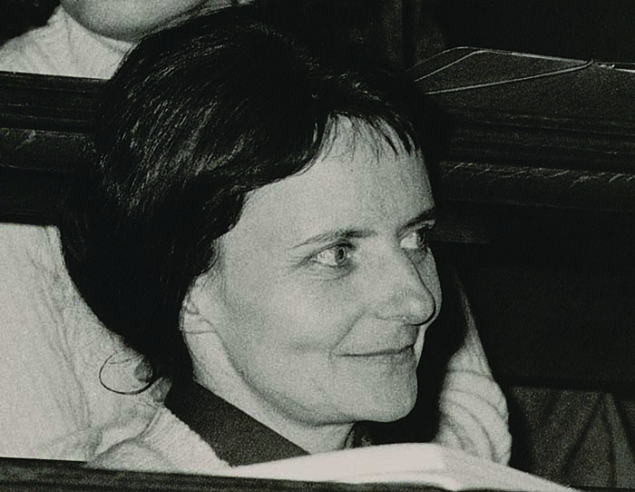
Violette Brisson, a highly respected member of the French particle-physics community who played a leading role in the discovery of neutral currents, passed away on 18 February at the age of 83. She led her long career at the Laboratoire Leprince-Ringuet (LLR) at École polytechnique, and the Laboratoire de l’Accélérateur Linéaire (LAL) in Orsay.
Violette joined the LLR in 1954 as a pioneering young woman in a domain then strongly dominated by male physicists. After a PhD devoted to measurements with cosmic rays, she was invited to work on the first hydrogen bubble-chamber experiment at Brookhaven’s Alternating Gradient Synchrotron. On her return to France, she joined André Lagarrigue’s heavy-liquid detector group. The highlight of the mid-1960s was the design and construction of Gargamelle, a giant bubble chamber to be located on the CERN PS neutrino and antineutrino beams. Violette’s expertise from the US was a strong asset to the project. She took part in the design of the illumination system of the chamber and was responsible for the implementation at LLR of the special scanning and measurement devices needed to handle Gargamelle pictures. Her parallel participation in the stopped-kaon experiment X2 allowed her group to master modern computing techniques for photo analysis.
When Gargamelle started operation in 1971, the focus turned to the search for weak neutral current (NC) events predicted by the Glashow–Weinberg–Salam model. Violette played a leading role in the analysis of the leptonic channel, which turned out to be decisive: a single and by now famous leptonic event with negligible background, together with hadronic events, were the basis of the ground-breaking NC discovery published in 1973. (This saga and the associated controversy with the US competition were related with humour by Violette during CERN’s 50th anniversary celebrations.) Afterwards, she became interested in nucleon structure functions in several experiments with Gargamelle and the Big European Bubble Chamber.
In the early 1980s, when the electron–proton collider HERA entered the scene, Violette fully engaged with this new project. She played a major role in the French contribution to HERA and to one of its experiments, H1. She joined LAL in 1988 and was personally strongly involved in the construction of the H1 liquid-argon calorimeter, going into every detail of its design and not hesitating to spend months within the cryostat to install the complex cabling with the technical teams. Later on she worked on the HERA Fabry-Pérot polarimeter for the high-luminosity phase. HERA did not find the hoped-for quark substructures or leptoquarks, but delivered a wealth of textbook results that provides reference proton-structure measurements for the LHC and, together with LEP and the Tevatron, fully unveiled the mechanism of electroweak unification first hinted at by the Gargamelle discovery of neutral currents.
In the 1990s, though already well advanced in her career, Violette was bold enough to move to a completely new domain – the quest for gravitational waves – within the French–Italian VIRGO experiment.
She again took on a major technical component of the detector, the 3 km-long vacuum chambers of the interferometer arms, taking care of the design of the complex ultra-high-vacuum system. This was a key ingredient to the success. It is comforting that, after many years of constant improvements of the interferometer, Violette was able to experience the first detection of a gravitational wave by VIRGO.
Beyond her talents as physicist, Violette had a deep sense of responsibility and outstanding organisational skills. She took on many collective duties, including assistant management of LLR for many years, the secretariat of the physics committee of the French Science Academy, French representation in international organisations such as IUPAP, and participation on conference committees. In 2003 she was nominated Chevalier de la Légion d’honneur.
Violette was not only a physicist: she was also a spouse, a mother and a faithful friend of many around the world, including a lot of colleagues. She led her life with passion, with a long and dense career crowned by two major discoveries. She will remain an inspiring model for all of us, and in particular to young female physicists.







